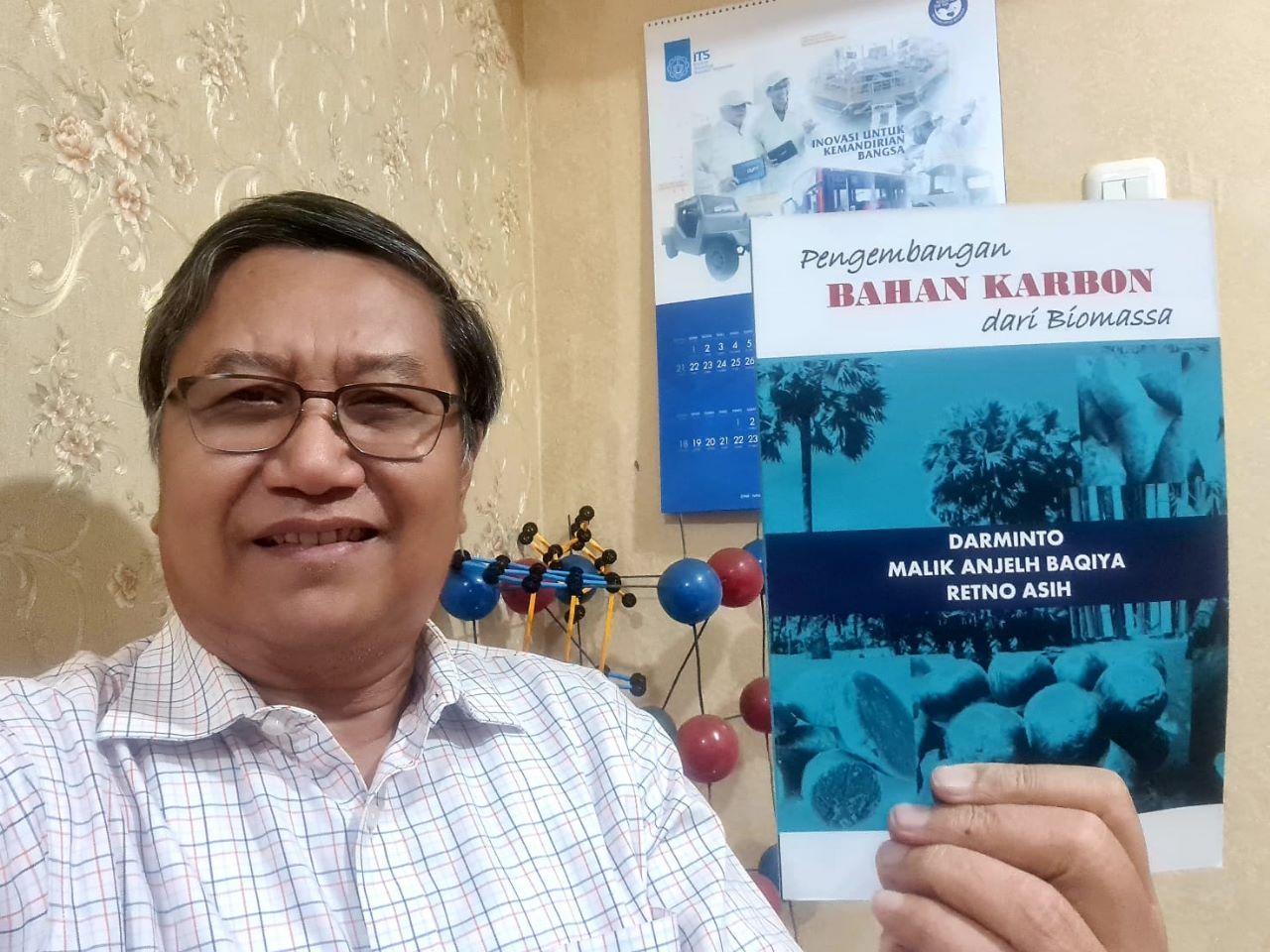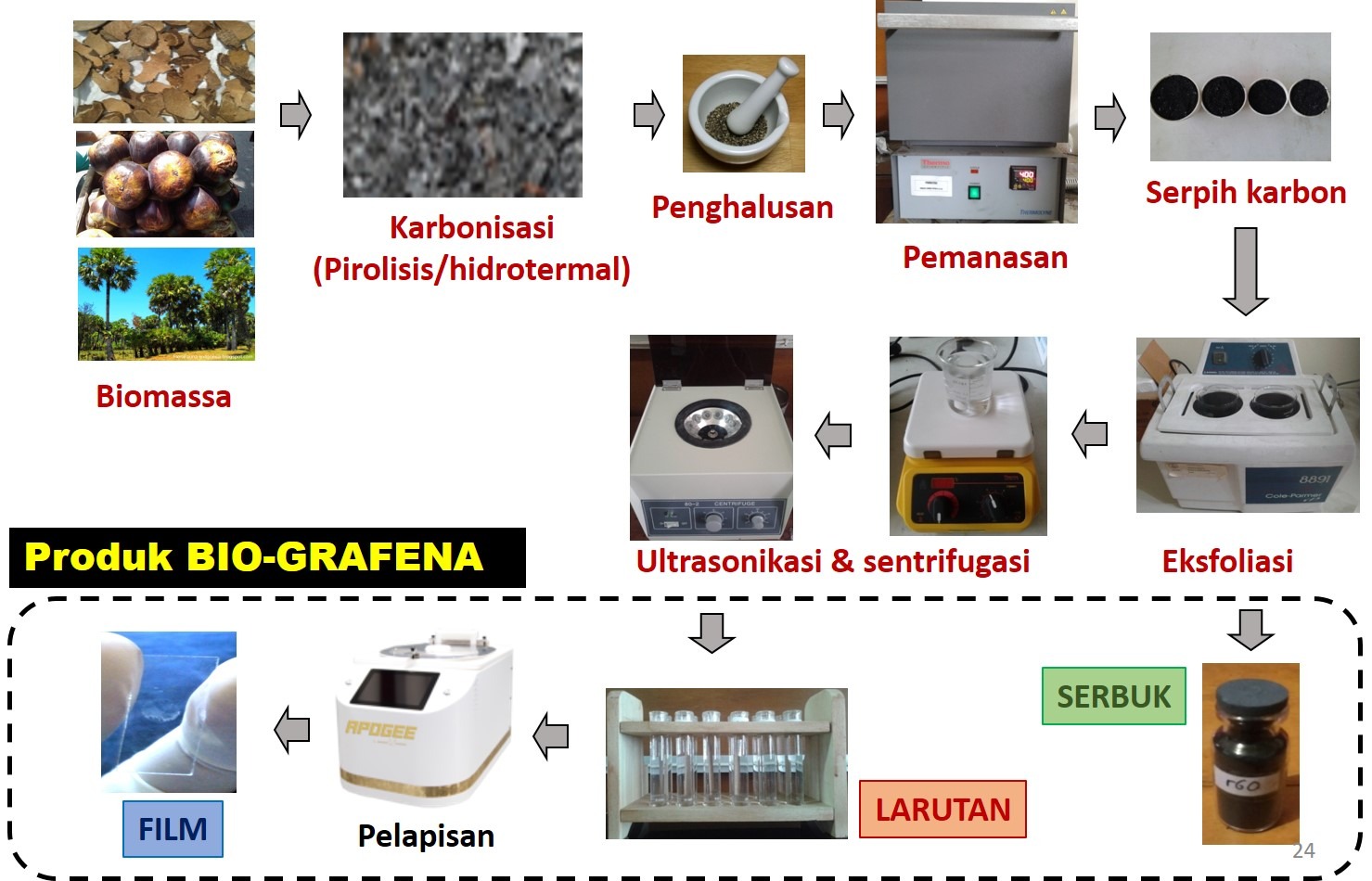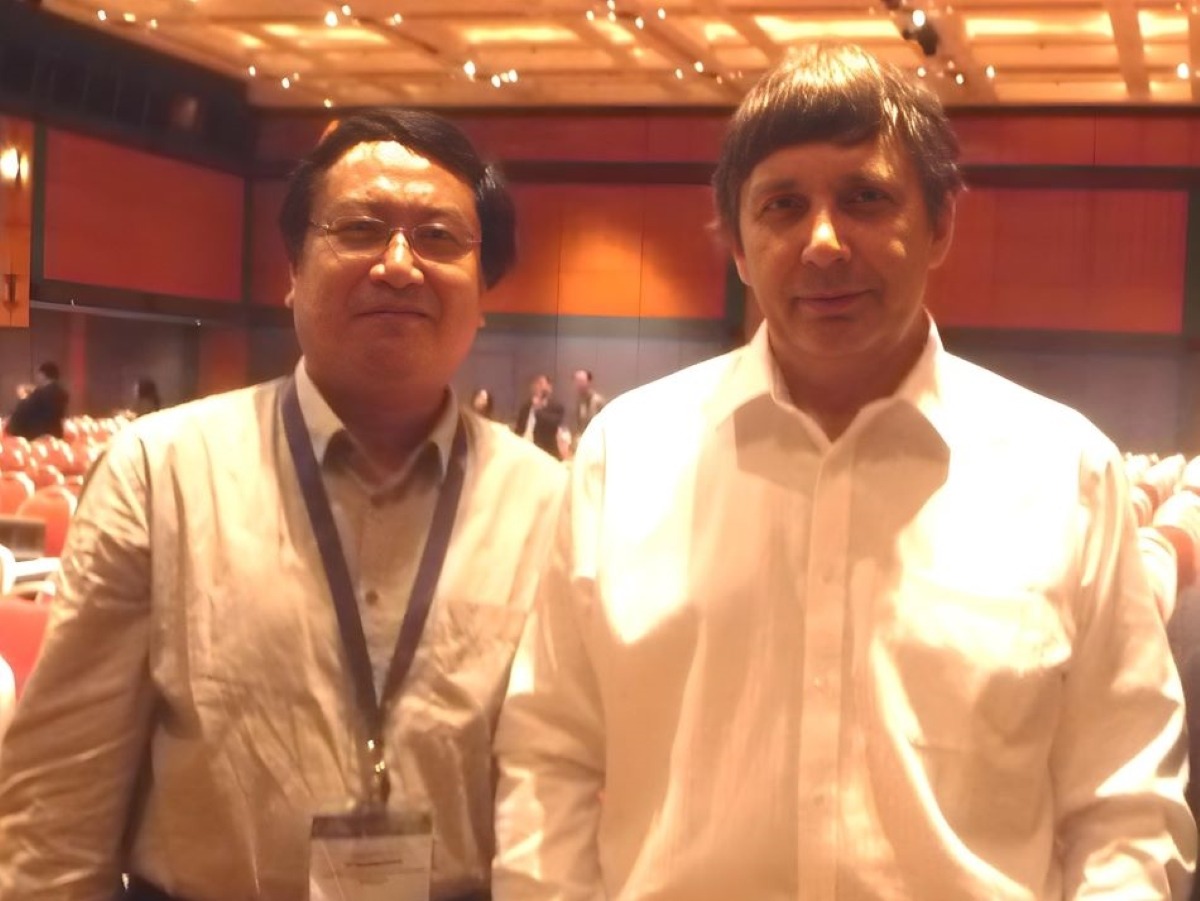ITS Professor Innovates Biomass into Solar Cells Component

Prof. Dr. Darminto MSc, a Physics Professor at Institut Teknologi Sepuluh Nopember (ITS), leads a research team focusing on amorphous carbon material based on graphene into Solar Cells Component.
ITS Campus, ITS News – Sustainable, renewable, and environmentally-friendly energy is currently a major focus of development. Building upon this concept, Prof. Dr. Drs. Darminto MSc, a Professor from the Department of Physics, Faculty of Science and Data Analytics (FSAD) at Institut Teknologi Sepuluh Nopember (ITS), along with his research group, has successfully fabricated semiconductor components for solar cells using biomass.
Darminto explained that amorphous carbon is a semiconductor material used in solar cells to convert solar energy into electric current. Typically, this material is composed of graphite, which is a mined product, making its availability limited. Hence, there is a need for amorphous carbon based on graphene, utilizing renewable resources.
One such alternative is to utilize biomass or organic plant materials. Darminto revealed that their innovation involves using sap from lontar trees, which is converted into carbon powder. This carbon powder is then dissolved and formed into a thin layer. “This thin layer is called amorphous carbon based on graphene,” he stated

The research diagram of the amorphous carbon based on graphene innovation using plant biomass to produce biographene products.
Amorphous carbon based on graphene offers several advantages, including environmentally-friendly raw materials, more affordable raw material costs, and a simpler processing method. This material is also applied in various technological aspects such as supercapacitors, battery electrode materials, various sensor components, and anti-radar coatings.
The amorphous carbon-based biomass device conceived by Darminto and his team is currently in the advanced development stage. However, the efficiency value of the photovoltaic cells or solar cells produced is still around 0.1 percent, which is significantly lower compared to amorphous silicon, which has reached over 10 percent efficiency. “This poses a significant challenge in improving the efficiency of amorphous carbon,” he expressed.

Prof. Dr. Darminto MSc (left) with Prof. Andre Konstantinovich Geim, the Nobel laureate in Physics in 2010 for his discovery of graphene, at an international conference.
The innovation of amorphous carbon based on graphene has been published in an international journal. Darminto remains optimistic that the efficiency value of amorphous carbon based on graphene can be enhanced to match solar cells available in the market. “The limitation of facilities in Indonesia is our main obstacle, so we need assistance from partners outside of Indonesia,” he added.
Through the Matching Fund Kedaireka program from the Ministry of Education, Culture, Research, and Technology (Kemendikbudristek) in 2023, the idea and innovation of this bespectacled lecturer are being vigorously developed for the production of micro biographene materials with private company partners. Darminto hopes that amorphous carbon based on graphene can be mass-produced and implemented in various technological applications in everyday life. (ITS Public Relations)
Reporter: Regy Zaid Zakaria
Related News
-
ITS Sends Off 12 Free Mudik Vehicles Ahead of Eid Al-Fitr
The dispatch of 11 bus fleets carrying ITS students for the Free Mudik ITS 2024 ITS Campus, ITS News
July 07, 2023 08:07 -
ITS Lecturer Wins 2024 Female Science Talents Intensive Tracks from Germany
Sri Fatmawati SSi MSc PhD, a lecturer at the Department of Chemistry, ITS, has emerged as the winner of
July 07, 2023 08:07 -
ITS Shares Tips & Tricks on SNBT 2024 Socialization
(from left) Executive Secretary of SNPMB 2024, Bekti Cahyo Hidayanto SSi MKom, Head of the Admissions Subdirectorate at ITS,
July 07, 2023 08:07 -
Supporting Defense in Indonesia, ITS Professor Creates Anti-Radar Material
Professor Dr. Mashuri SSi MSi, while delivering his academic oration on anti-radar materials during the ITS Professorial Inauguration. ITS
July 07, 2023 08:07
